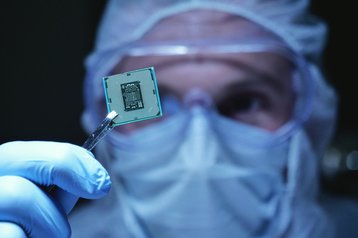As we watch demand skyrocket in the industry, it is natural to expect other things to grow in size also.
But as Kohler is demonstrating, demand doesn’t necessarily require bigger – it needs denser.
Ian Wilcoxson is the manager of the data center channel for Kohler, and sat down with us at the DCD>Connect London event.
“What we are trying to do more and more is squeeze more into the same area, so the density of the data center, the spaces available for the generators, and its associated equipment are getting smaller and smaller.
“That's the challenge that we are facing, and that’s where our products have developed over the years, we've answered that by having larger engines that produce more power with the same footprint.
“If we go back five years, a data center generator will be a two-megawatt generator, and it will be in an enclosure that is 15 meters long, three meters wide. Now, that two-megawatt generator is a 3.6-megawatt generator, in the same amount of space.
“An analogy that we use is a car from the 1980s, a muscle car, let's say that's producing 250 horsepower. Well, that would have had a six-liter engine back in the day. Well we know that you can get a little VW engine now in an Audi, for example, and it's producing the same amount of power, But it's a 1.8-liter engine.”
Development is not only limited to increasing the density of the generators. As is a pressing issue industry-wide, considerations are being made surrounding sustainability and the solutions that could help reduce global emissions.
“If you want to legislate against emissions, of course, you look at the volume. The volume is in the car industry, it's in the truck industry. If you look at a data center, while the diesel is dirty diesel, while you are in standby mode, they're not polluting.
“The only energy they use when they're in standby mode is a heater, a small heater that sits on the side of the engine keeping it warm, and of course, we can use waste heat from the data center. It's a small change, but it's another incremental change.”
Another possibility for reducing emissions is hydrotreated vegetable oil (HVO) – a renewable diesel alternative that eliminates up to 90 percent of net Co2 and significantly reduces other emissions.
“We've tested our engines on HVO, and we're completely happy with them.
“You can plan to run on HVO, and worst-case scenario you turn to standard diesel as the backup to the HVO. But there are other ways.
“Another one, called GTL, is classic gas to liquid. The challenge here is that it's made from natural gas. It’s not a renewable fuel, but it does burn cleaner in the engine, so reduces your emissions. But you don't get the Co2 savings that you would with a truly renewable fuel that's made from a waste product [like HVO]”.
Ultimately, we can continue to hope that our equipment will get denser, greener, and lead us into a more sustainable (economically and environmentally) industry. It is the companies that continue to innovate that will help us to get there.


